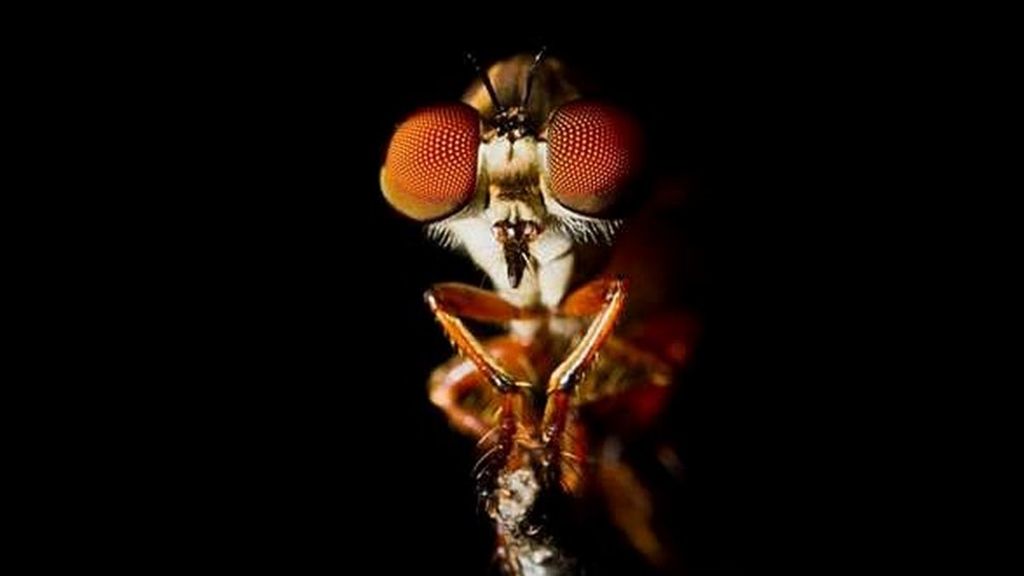Holcocephala, a species of robber fly, is able to intercept and “lock on” to its prey in less than a second.
Researchers used high-speed cameras to show exactly how the fly positioned itself to capture a moving target in mid-air.
Paloma Gonzalez-Bellido explained that, normally, “when we think of hunting animals we think of excellent vision and speed, but when you’re so very tiny, you have a very small brain and limited sensory capacity”.
She added: “We wanted to know how [this fly manages] this predatory behaviour.”
Dr Gonzalez-Bellido and her colleagues created a miniature outdoor studio – filming the fly from two angles to capture its movement in 3D.
They discovered that the fly maintained what they described as a “constant bearing angle” – keeping its prey in the centre of its field of vision.
PhD student Sam Fabian explained: “They’re not sticking to a trajectory; if the target changes direction, they compensate, so this is reactive.”
In doing this, the insects are essentially using a very old navigation rule employed by sailors, Dr Gonzalez-Bellido explained.
“If another vessel is not moving within your field of view, and it’s getting bigger and closer, you’re on a collision course,” she said.
The team also studied the fly’s eyes, revealing that part of its hunting secret was contained in its highly adapted vision. Larger lenses and a high density of extremely tiny sensors at the centre of its eyes allow it to see its prey from a distance and to accurately “lock on” as it approaches.
“This gives this fly a resolution in this area that’s the same as much larger dragonflies,” explained Dr Gonzalez-Bellido. “It’s an extreme adaptation.”
The next step for scientists is to find out exactly how Holcocephala’s brain takes this visual information and turns it into a stealth hunting manoeuvre in the blink of an eye.
N.H.Kh

